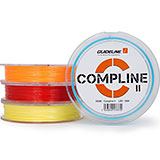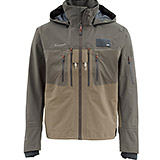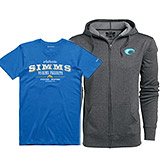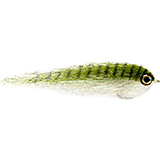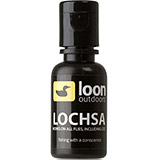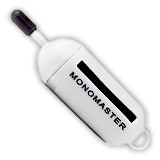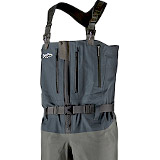Fly Fishing Knots - Part 2: Surgeon's Knot
Fly fishing without knots? Not possible! Whether for mounting the fly, for connecting the leader and tippet, as transition between flying line and leader or for securing the backing ... without knots it just doesn't work. In our series "Knots for Fly Fishers" we introduce you to an important knot in each video and explain the most important applications in practice.
The Surgeon's Knot
You do not need a medical degree to tie a surgeon's knot. Because this versatile fishing knot is one of the easiest of all. Nevertheless, it offers good strength of approx. 70-80%.
In surgery, this knot is used to tie sutures. For us fly fishers, on the other hand, it has very different functions in different variations: It is used to connect two ends of a line, to make a loop or to attach a side arm. One advantage of the surgeon's knot (besides the fact that it is quick and easy to use) is that you can also connect different materials together. So it is no problem to combine fluorocarbon and soft steel, for example when pike fishing to make a pike leader. However, a more elegant alternative for this purpose is the Albright knot. This is, admit it, but a bit more complicated to tie. We therefore present it to you in a separate video.
Surgeon's Knot in practice
In practice, the surgeon's knot is used by us fly fishers to:
- tie a loop. To knot such a loop you should lead both ends of the string two or better three times through the opening. You can use a surgeon's knot loop, for example, to loop your tapered leader into your fly line per loop-to-loop connection. But be careful: This loop knot is quick and easy, but the resulting eyelet is slightly off to the side of the rest of the leader. The knot also adds a little more than other loop knots. Especially if you run the ends of the line three times. An alternative to this loop knot is therefore the Perfection Loop. It is visibly slimmer and the eyelet goes straight into the leader. We present the Perfection Loop in a separate video.
- create a side arm. The surgeon's knot is perfect for this application! Again, you should pass the material through the opening 2-3 times and moisten it slightly (fluo or nylon) before tightening. A side arm is used to fish a dry fly with one nymph or two nymphs of different weight at the same time. In these dropper setups we use the end of the main line for our side arm or dropper - i.e. our dry fly or upper/dropper nymph. Especially when nymphing, the fact that our main arm of the tippet ends in the dropper has a central advantage: If the lower nymph gets caught on the bottom at the point (on the additional piece of fluo or nylon) and this causes a break, the upper nymph is usually saved because it sits on the main arm. The same applies to our dry fly, should the nymph break off at the bottom. Another tip: When using a dropper with a dry fly, the side arm should be very short (about 2-4 cm). Only then can the dry fly indicate a bite immediately. In nymph fishing, however, the side arm remains considerably longer (10-15 cm). Only then can the nymph move freely.
- connect two line ends with each other. If you connect two line ends (no matter what material) with the surgeon's knot, you can safely cut both ends. However, it is important that you tighten the knot correctly before doing so. Otherwise the knot will unravel under heavy strain. The good thing about the surgeon's knot is that you can also combine very different materials or diameters. For example fluo with nylon or nylon with steel. These surgeon's knot connections are quick and easy, but have one disadvantage: the two ends of the cord do not merge in a straight line. If you want a straight connection, you should use a blood knot, which we will show you in a separate video.
The surgeon's knot is used for trout fishing, pike fishing, salmon fishing, sea trout fishing and also in tropical salt water. An indispensable knot that can be made very quickly and easily. Perfect for beginners! It is also perfect for mounting a side arm. Here it does not bother that the end protrudes laterally from the main arm - on the contrary.
We wish you a lot of fun with reknotting and tight lines on the water!















